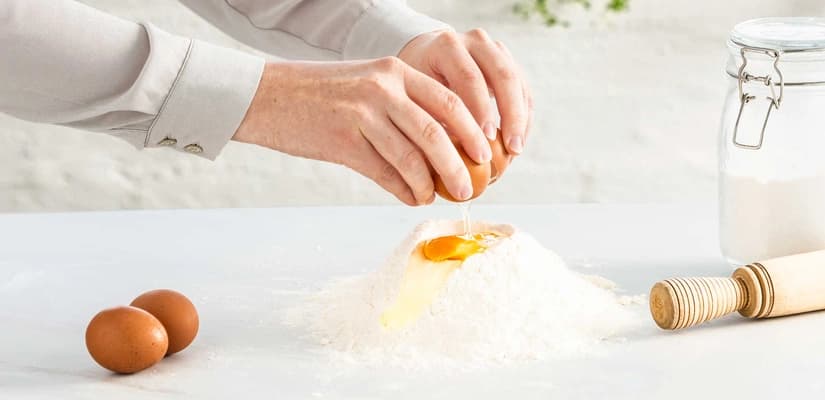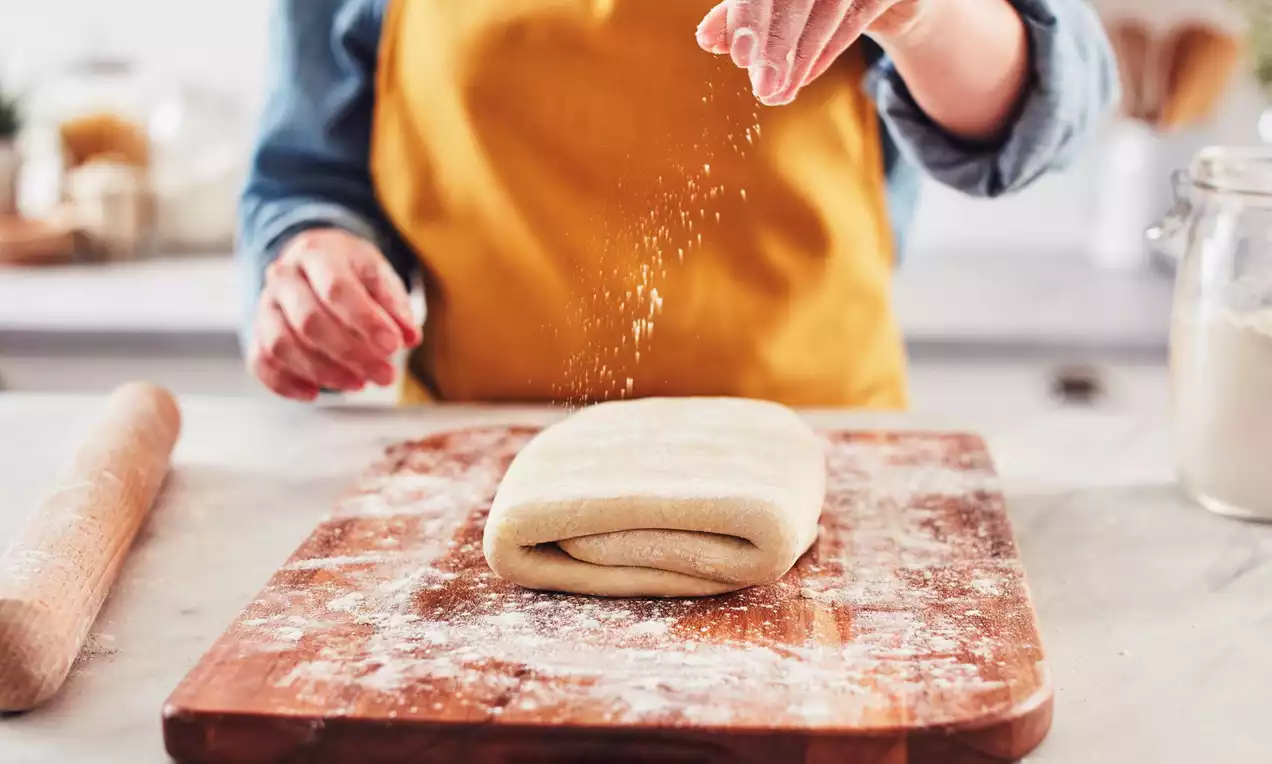How to Make Flaky Pastry
From rich savoury pies to deliciously sweet tarts, flaky pastry is easily one of the most versatile pastries you can use in baking. Never tried making it yourself before? Not to worry. It’s incredibly simple and quick to whip up (even for novice bakers). Plus it’s made from just a few low-cost ingredients.
Ready to impress your tastebuds with some homemade pastry that has just the right flavour and consistency? Say goodbye to shop-bought pastry. Let’s take a look at how to make fabulously flaky pastry at home from scratch.
First things first, what exactly is flaky pastry? Also known as rough-puff pastry, flaky pastry is a thin, light pastry that, when baked, produces wonderfully crispy layers. It’s often to referred to as the cheat’s puff pastry as it requires far less effort and time to create it.
Like many pastry recipes, flaky pastry features just a handful of store cupboard ingredients:
• butter
• plain flour
• a pinch of salt
• cold water (never hot!)
• sugar (if you’re making a sweet version)
There are a few different approaches when it comes to making flaky pastry. Nevertheless, there is one thing that all bakers unanimously agree on: that the butter should never be melted or too warm when it’s combined with the flour.
Ready to learn the (not so) secret method of perfect flaky pastry? Here we’ll take you how to make a basic flaky pastry dough:
Make your dough
Dig out your mixing bowls and find those measuring scales. It’s time to get started making your dough.
Ingredients:
• 150g butter (or vegan butter)
• 220g plain flour
• A pinch of salt
• Cold water
Method:
1. Measure out all of your ingredients, making sure you sift your flour.
2. Pop the flour and salt in a mixing bowl. If you were making sweet dough, you would also add in the sugar.
3. Wrap your butter up in tin foil or place it in a box. To make sure it’s really cold for mixing, you’ll now want to put it in the freezer for 15 minutes or so.
4. Take your butter out and carefully grate it using a cheese grater.
5. Using a palette knife or metal spoon, carefully start adding the grated butter to the flour.
6. Sprinkle in a tablespoon of cold water as you begin combining the flour and butter with the knife/spoon. Add splashes of cold water as needed.
7. When the dough is nearly combined, you can finish mixing it with your hands (but make sure you keep this step brief – the warmth from your hands will quickly start to melt the butter).
Leave the dough in the fridge
Now you’ve got a lovely bowl of dough prepared, the next step is to place it back in the fridge. Wrap it in clingfilm, pop it in a sealed sandwich bag or use an airtight container to store it. Leave it in the fridge for around 30 minutes before using.
Not planning on cooking with it right away? This would be the moment to freeze your flaky pastry dough.
Rolling and folding your dough
Ready to bake up a storm in your kitchen? Here’s how to roll out your rough puff pastry:
1. Place your ball of chilled dough on a lightly floured surface.
2. Gently press it into a large round or square shape depending on what you’ll be using it for.
3. Dust a clean rolling pin and then slowly begin to roll out the pastry, using forwards and backwards movements.
4. When the dough is about 4mm thick, fold into three and wrap it in clingfilm.
Leave the dough in the fridge (again)
Now it’s time for the dough’s second rest in the fridge. It’ll only need about 20 minutes. To stop it from sticking together when folded, dust it lightly with flour first (you can always brush this off later) or use strips of greaseproof paper in between the layers.
Ready to use
Once your flaky pastry dough has been in the fridge a second time, it’s ready to use. Simply unwrap it, unfold it and then shape it to suit your flaky pastry recipe’s needs.
So, now you know all about rough puff (or flaky) pastry. But how does it differ to making puff pastry? Both types produce layers of crispy, buttery pastry when cooked. The difference lies in their fat content and their physical height/volume when baked.
Flaky pastry recipes tend to contain slightly less fat than regular puff pastry. And flaky pastry produces thinner, lighter layers when cooked. This makes it better suited to pastry recipes that don’t need to appear quite so ‘puffy’. For example, flaky pastry works particularly well for pie crusts, pasties or sausage rolls (and vegan sausage rolls too).
Want to consistently make perfect flaky pastry for all your sweet and savoury treats? Here are a few hints and tricks:
1. Avoid using a food processor or mixer to make your flaky pastry. This could end up melting the butter and prevent those lovely, buttery layers from forming when it’s cooked.
2. Freeze your pastry dough. Freezing flaky pastry is easy. Just remember that when you defrost it, you should let it reach room temperature before rolling it out.
3. Cool your dough before cooking. While flaky pastry should be at room temperature for rolling, you’ll want it cold before you cook with it. This helps keep the buttery layers between the pastry.
4. Check your oven. Always make sure your oven is at the right temperature before popping your chosen flaky pastry recipe in to bake.
5. Dust your work surfaces with flour. To stop your pastry from sticking to your work surface, dust it well with flour first. You can then brush the excess off the dough before you use it.
6. Is your flaky pastry dough a little thick and hard to roll? Cover it with a clean tea towel, leave it to rest for a few minutes, and then try rolling it out again.
7. Want a good lamination on your dough? Make sure your butter doesn’t melt too much while you’re making it.
We’ve got heaps of yummy pastry recipes to try, from bite-sized tarts and lunch box pasties to showstopping desserts like chocolate-filled pies. Want to expand your pastry knowledge even further? Discover how to make puff pastry, shortcrust pastry and filo pastry. You’ll be a baking pro in no time.
Related Tips & Tricks

Kitchen Tips
Cleaning with Bicarbonate of Soda

Kitchen Tips
How to Blind Bake Pastry

Kitchen Tips
How to Soften Butter

Kitchen Tips
Chocolate Ganache

Kitchen Tips
How to Make Caramelised Sugar

Kitchen Tips
How to Make Self-Raising Flour

Kitchen Tips

